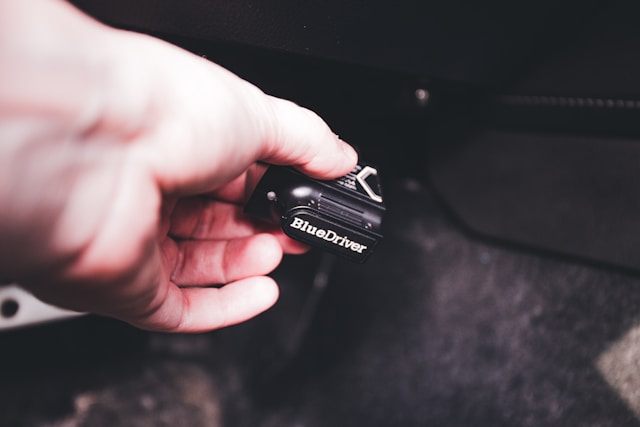Keeping your car seats clean is essential not only for aesthetics but also for maintaining the longevity of the materials. Whether you have cloth or leather seats, regular cleaning can prevent dirt, oils, and stains from embedding deep into the fabric or leather. In this guide, we’ll walk you through the step-by-step process of super-cleaning both cloth and leather seats, ensuring they look as good as new.
Tools and Products You’ll Need
Before diving into the cleaning process, gather the following tools and products:
- Vacuum cleaner (preferably a shop vac for stronger suction)
- Brush set (including a toothbrush for tight spaces)
- Microfiber towels
- Carpet and upholstery cleaner (for cloth seats)
- Leather and vinyl cleaner (for leather seats)
- Leather and vinyl conditioner (for leather seats)
- Extractor vacuum (highly recommended for deep cleaning cloth seats)
- Interior detailer (for plastic and metal parts)
- Protectant (for UV protection and restoring plastic finishes)
- Steam cleaner (optional for sanitizing and deep cleaning)
- Thread locker (for securing seat bolts during reinstallation)
Tools and Products You can purchase at Amazon
Before diving into the cleaning process, go to Amazon and purchase the following tools and products:
- Detailing Brushes (including the vent brush): https://amzn.to/4hTjQZo
- Carpet and Upholstery Cleaner: https://amzn.to/41ia7EY
- Extractor Vacuum: https://amzn.to/3Xc9QCb
- Leather and Vinyl Cleaner and Conditioner kit: https://amzn.to/43bJkwQ
- Interior Plastic/Vinyl High Gloss Protectant: https://amzn.to/41ymmyN
- Microfiber Towels: https://amzn.to/4gYms6Y
- Steam Cleaner: https://amzn.to/4hQSlzW
- Shop Vacuum: https://amzn.to/4be3Tuz
-
Step 1: Remove the Seats
To thoroughly clean your car seats, it’s best to remove them from the vehicle. This gives you better access to all areas, including the sides and undersides of the seats.
- Disconnect the Battery: Start by disconnecting the negative cable from your car battery. This is important for two reasons:
- You’ll have the doors open for an extended period, which could drain the battery.
- Some seats have airbags, and disconnecting the battery ensures there’s no risk of accidental discharge while working on the seats.
- Wait 20 Minutes: After disconnecting the battery, wait at least 20 minutes to allow the capacitor to discharge completely.
- Remove the Seats:
- Slide the seat back to access the front screws. Remove the screws and push the seat forward to access the rear screws.
- Angle the seat back to disconnect any wiring harnesses.
- Carefully remove the seat, ensuring you don’t scratch the interior or door panels with the metal parts of the seat.
- Repeat the process for the passenger and rear seats.
Step 2: Cleaning Cloth Seats
Cloth seats can accumulate dirt, oils, and stains over time, especially in high-contact areas. Here’s how to deep clean them:
- Vacuum the Seats: Use a vacuum cleaner to remove surface dirt. Pay special attention to the crevices and stitching, as dirt tends to accumulate there. A toothbrush can help loosen stubborn dirt.
- Apply Carpet and Upholstery Cleaner: Spray the cleaner onto the seat and use a brush to work it into the fabric. Brushes help agitate the fibers, allowing the cleaner to penetrate deeper.
- Wipe Down the Seats: Use a dry microfiber towel to absorb the dirt and cleaner from the seat. Be sure to get into hard-to-reach areas.
- Deep Clean with an Extractor Vacuum: For a deeper clean, use an extractor vacuum. Saturate the seat with water (or carpet cleaner) to dissolve dirt trapped in the foam beneath the upholstery. Then, use the extractor vacuum to suck out the water and dirt. Repeat if necessary.
- Dry the Seats: Allow the seats to dry completely before reinstalling them to prevent mold growth.
Step 3: Cleaning Leather Seats
Leather seats require a different approach, as they are often coated with a protective vinyl layer. Here’s how to clean and condition them:
- Vacuum the Seats: Start by vacuuming the seats to remove loose dirt. Use a brush to clean the stitching, as dirt often gets trapped there.
- Apply Leather and Vinyl Cleaner: Spray the cleaner onto a microfiber towel and wipe down the seats. Use a brush with cleaner to loosen dirt in the crevices.
- Condition the Seats: After cleaning, apply a leather and vinyl conditioner to protect and restore the seats. Use a steamer to open the pores of the leather, allowing the conditioner to penetrate deeper. Buff off any excess conditioner with a clean microfiber towel.
- Address Wear and Tear: For areas with visible wear, clean and condition them thoroughly. While you can’t completely repair wear, conditioning can help mask it and prevent further damage.
Step 4: Cleaning Seat Belts and Other Interior Parts
Don’t forget to clean the seat belts and other interior components:
- Clean the Seat Belts: Pull the seat belts all the way out and clamp them to prevent retraction. Use a carpet and upholstery cleaner on a microfiber towel to clean both sides of the belt. Dry with a clean towel and let it air dry completely.
- Clean Plastic and Metal Parts: Use an interior detailer to clean plastic and metal parts around the seats. Apply a protectant to restore the finish and protect against UV damage.
Step 5: Reinstall the Seats
Once everything is clean and dry, it’s time to reinstall the seats:
- Reconnect Wiring Harnesses: Carefully reconnect any wiring harnesses and ensure they are securely plugged in.
- Secure the Seats: Use a medium-strength thread locker on the seat bolts to prevent them from loosening over time. Hand-tighten the bolts and then torque them to the manufacturer’s specifications.
- Reconnect the Battery: Finally, reconnect the negative cable to the battery and tighten it securely.
Final Thoughts
By following these steps, you can super clean both cloth and leather seats, ensuring they look and feel like new. Regular cleaning and conditioning will keep your car looking great and extend the life of your seats. Whether you’re dealing with everyday dirt or more stubborn stains, this guide has you covered. Happy cleaning!





